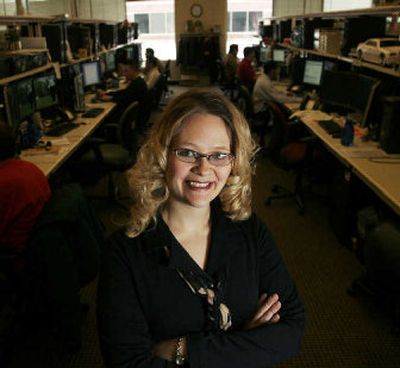Discovery goes electronic

EDEN PRAIRIE, Minn. — Even just a few years ago, lawyers in corporate lawsuits sometimes agreed not to poke around in their opponents’ e-mails. Instead they’d confine themselves to paper memos and other documents on file as they pursued evidence.
Now, however, with so much work done via e-mail, instant messaging and other online platforms, “nothing’s in the file cabinets anymore,” said Michele Lange, staff attorney for legal technologies at Kroll Ontrack Inc.
Instead, the memos, presentations and other scraps of corporate intelligence are increasingly finding their way into vast “electronic discovery” centers like the one Kroll Ontrack operates here near Minneapolis.
Day and night, rows of whirring, blinking computers sock away enormous batches of digital records sent by companies involved in lawsuits. Other files are discovered deep in hard drives — wedged between everything from personal e-mails to pornography — by Kroll Ontrack forensic teams whose code names keep their missions secret.
All this once was an arcane backwater of the legal-services field. Electronic discovery was commonly performed by local computer experts who played golf with law firm procurement officers.
But several factors — including the inexpensive abundance of data storage, high-profile lawsuits and strict new laws such as Sarbanes-Oxley that demand thorough corporate archiving — are making electronic discovery a lucrative and competitive slice of information technology.
The overall market is worth close to $2 billion and growing at about 35 percent a year, says Michael Clark, who analyzes the field at EDDix LLC. The number of companies offering computer-related evidence gathering appears to have doubled in the past two or three years, with several hundred now hanging a shingle.
This surge has led Kroll Ontrack to quadruple the size of its data-crunching center in less than 18 months, from a half-petabyte of storage to two petabytes. That’s 2 million gigabytes. Consider that the Internet Archive, which aims to store almost every public Web page ever to appear, currently totals one petabyte.
Rival e-discovery vendor Fios Inc. had 48 employees three years ago. This year, the Portland, Ore.-based company expects to employ more than 120, with revenue of $30 million — nearly double its 2004 figure.
Increasingly, e-discovery customers are not just law firms enmeshed in big corporate cases. More and more, companies are working proactively with e-discovery vendors, getting a handle on their data troves so they can meet regulatory requirements — or just in case they are sued.
After all, 90 percent of U.S. corporations are engaged in some type of litigation, according to research by the law firm Fulbright & Jaworski LLP. The average company bigger than $1 billion is wrestling with 147 lawsuits.
“The big risk for companies is too much data that there’s really no business need for, being kept in ways that if they had to go looking for it, would be uneconomic,” said e-discovery pioneer John Jessen, who founded Electronic Evidence Discovery Inc. in 1987.
Much of what e-discovery companies do is similar — but offered under different names or pricing schemes.
Generally, a vendor gets raw material from corporate computers and backup tapes, then dives in — with specialized software rather than humans — to remove duplicate files or records that have no bearing on a case, while zeroing in on those that might. Later the vendors can be asked to testify how the searches were conducted.